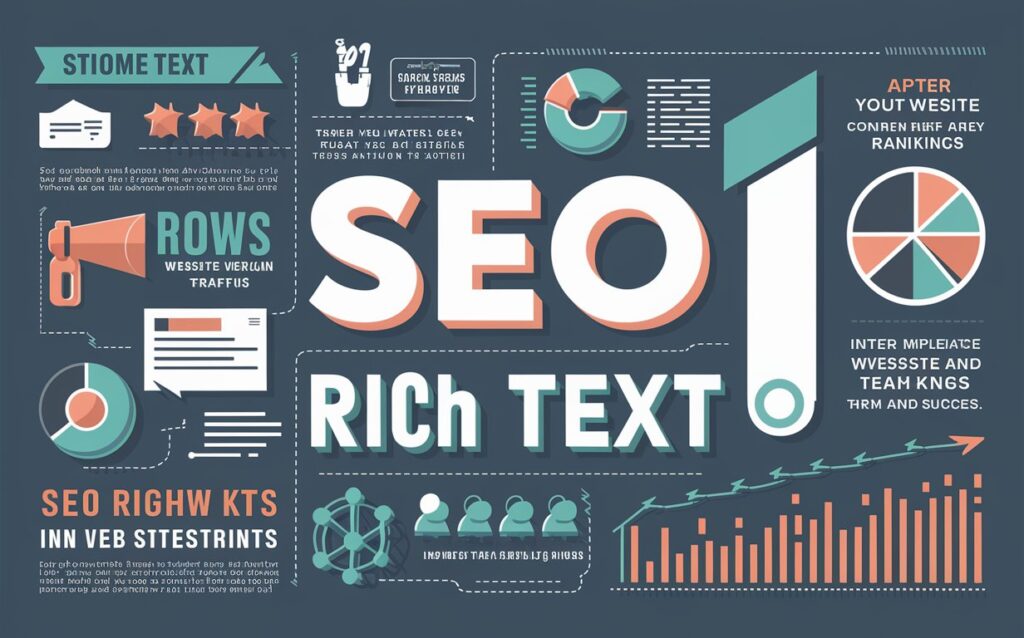To optimize images for SEO, name them with descriptive, relevant keywords and separate words with hyphens for readability. When naming images, think about what users might search for to find the content represented in the picture.
This practice helps search engines understand the context of the image and improve its visibility online. Images play a crucial role in enhancing the user experience on a website by providing visual appeal and context. By naming images strategically for SEO, you can increase the chances of your content being discovered through organic search.
Additionally, optimized image names can contribute to higher rankings in image search results, leading to more website traffic and engagement. Let’s explore the importance of naming images for SEO and some best practices to maximize their impact on your online presence.
Understanding Seo Image Naming
When naming images for SEO, it is crucial to include relevant keywords that describe the image content. Having a clear, descriptive filename can significantly improve the image’s visibility on search engines. Including keywords in the image name not only helps search engines understand the image’s content but also enhances the overall SEO of the webpage where the image is used.
It’s important to use hyphens instead of underscores or spaces to separate words in the image file name. For example, instead of “image1_finalversion.jpg,” it’s better to use “seo-friendly-image-name.jpg.” Search engines recognize hyphens as word separators, which can improve the image’s visibility for relevant search queries.
Another essential component of image names is relevance to the surrounding content and alt text. When naming an image, consider how it relates to the web page’s topic and ensure that the alt text and surrounding content align with the image name. This cohesiveness signals to search engines that the image is relevant to the overall content, boosting its SEO value.
Best Practices For Image Naming
Using descriptive keywords is crucial when it comes to optimizing images for SEO. Instead of generic names like “IMG_001.jpg” or “DCIM1234.jpg,” use relevant keywords that accurately describe the image. For example, if you have a picture of a dog, name it “cute-puppy-dog.jpg” or “golden-retriever-playing-fetch.jpg.” This helps search engines understand what the image is about and improves its chances of appearing in relevant image search results.
Another important aspect is to utilize hyphens in image names. Separating words with hyphens, such as “cute-puppy-dog.jpg,” makes it easier for search engines to read and interpret the keywords. Avoid using underscores or spaces, as they can make the file names harder to read and analyze.
Consistency in naming conventions is essential for managing large volumes of images. Establish a naming convention and stick to it consistently throughout your website. This ensures that all your pictures are properly optimized and easily identifiable, making it easier to organize and manage your image files.
Choosing The Right Keywords
For SEO, prioritize relevant keywords in image names for improved visibility.
Understand your target audience and choose the right keywords for naming images.
Utilize keyword research tools to determine popular search terms.
Image File Formats And Seo
To optimize images for SEO, use descriptive filenames with relevant keywords, such as “SEO-image-file-formats. jpg”. Additionally, consider using popular image file formats like JPEG and PNG, which are SEO-friendly and load quickly on web pages. Including alt text and captions can further boost image SEO.
Naming images for SEO is crucial for optimizing website performance. Image file formats like JPG, PNG, and WebP play a role in SEO rankings. Use descriptive keywords in image filenames to improve discoverability. Compress images without sacrificing quality for faster loading speed. Alt text should include relevant keywords to enhance image SEO. Consider the context of each image to ensure relevance for SEO.
Leveraging Alt Text For Seo
When naming images for SEO, it’s essential to leverage the alt text effectively. Alt text, also known as alternative text, is crucial for image SEO as it allows search engines to understand and index images.
Writing effective alt text involves describing the image accurately and concisely. Ensure that relevant keywords are included in the alt text while avoiding keyword stuffing. This helps search engines understand the context and relevance of the image to the content.
The impact of alt text on image SEO is significant as it influences the visibility of images in search engine results. Utilizing descriptive and keyword-rich alt text can enhance the chances of images appearing in relevant searches, driving organic traffic to the website.
Avoiding Common Mistakes
When naming images for SEO, avoiding common mistakes is crucial. Ignoring image names can negatively impact your SEO efforts. Keyword stuffing should be avoided at all costs, as it can result in penalties from search engines. Similarly, using special characters in image names can lead to indexing issues and affect your website’s ranking. Instead, opt for descriptive and relevant names for your images, incorporating relevant keywords naturally. This can improve your image SEO and make your content more discoverable to users. Remember, the right image names are an essential part of optimizing your website for search engines.
Measuring Success
Measuring Success in image SEO involves Tracking Image SEO Performance and evaluating click-through rates. When naming images for SEO, remember to use descriptive file names and alt attributes. Conduct regular audits to analyze the performance of your optimized images. Monitor the click-through rates of images in search results to gauge their effectiveness. Utilize tools like Google Search Console to track impressions and clicks for image searches. Adjust image names and attributes based on performance data to improve SEO impact. Consistently measure and refine your image SEO strategies to ensure maximum visibility and engagement.
Tools For Image Seo
If you want to optimize your images for SEO, using the right tools is crucial. Image SEO is an essential part of on-page optimization, and having the right tools can help you achieve better visibility in search engine results. One valuable tool for image SEO is an SEO-friendly image name generator. These tools can help you create descriptive and keyword-rich image file names, making it easier for search engines to understand what the image is about. The better the image file name, the higher the chances of it ranking well in image search results.
In addition to image name generators, image SEO analysis tools are also available. These tools provide insights and recommendations for optimizing your images. They can analyze factors such as file size, alt text, image dimensions, and more. By using these tools, you can identify areas for improvement and make the necessary adjustments to optimize your images for search engines. Overall, using the right tools for image SEO can greatly enhance the visibility and discoverability of your pictures online.
Case Studies
Case Studies:
Successful Image Naming Strategies:
– Use descriptive keywords in image file names to improve SEO.
– Include relevant keywords that describe the image content accurately.
– Separate keywords with hyphens for better readability and indexing.
Impact on Organic Traffic:
– Properly named images can increase organic visibility and clicks.
– Search engines use image file names to understand the context of images.
– Relevant image names can lead to higher rankings in image searches.
Mobile Optimization
To optimize images for mobile SEO, use descriptive file names with relevant keywords. This helps search engines understand the content of the images and improves visibility on mobile devices. Ensure the image names are concise and reflect the content accurately, contributing to a well-optimized mobile website.
Impact of Image Names on Mobile SEO
Naming images appropriately improves mobile SEO rankings. Descriptive names help search engines understand content better. Use relevant keywords in image filenames. Ensure image sizes are optimized for fast loading on mobile devices.
E-commerce Image Naming
When it comes to optimizing product images for SEO, the way you name your images can greatly impact your website’s visibility and search engine rankings. By following these tips, you can enhance user experience and improve your website’s SEO performance.
- Use descriptive filenames: Name your images with relevant and descriptive keywords that accurately describe their content. This not only helps search engines understand the image but also helps users find what they are looking for.
- Avoid generic names: Instead of using generic filenames like “img001.jpg”, use specific names that include relevant keywords related to the product or category they belong to. This not only helps search engines understand the context but also improves your chances of appearing in image search results.
- Include hyphens: When naming your images, use hyphens to separate words instead of underscores or spaces. Search engines interpret hyphens as word separators, making it easier for them to understand the different elements in the filename.
- Optimize alt attributes: Each image should have an alt attribute that provides alternative text describing the image. This helps search engines understand the content of the image and improves accessibility for visually impaired users.
By following these image naming practices, you can improve your website’s SEO and provide a better user experience, resulting in increased visibility and organic traffic.
Voice Search Considerations
When naming images for SEO, consider incorporating long-tail keywords that reflect natural language queries people would use in voice searches. It’s important to anticipate the conversational phrases and questions that users might ask when searching for visual content. By utilizing descriptive and specific image names, you can optimize for voice search and increase the likelihood of your images appearing in relevant search results. Furthermore, think about how someone might vocally describe the image they are seeking and tailor the file names to align with those potential verbal queries.
Future Trends
Future Trends:
Visual Search Impact is rapidly shaping the SEO landscape. With the rise of AI and technology advancement, the way we optimize images for search engines is evolving. In the near future, image SEO will strongly rely on visual search capabilities. AI algorithms will analyze visual cues within images, enabling search engines to understand content better.
Benefits of Visual Search:
- Improved user experience, allowing for more intuitive searches
- Increased opportunity for brands to engage with consumers
- Expanded reach and discoverability of content
Optimizing Images for Visual Search:
- Use descriptive filenames that include relevant keywords
- Provide alt tags that accurately depict the image content
- Utilize structured data markup to enhance image recognition
- Optimize image file size and format for faster loading times
Stay Ahead:
With the increasing significance of visual search, it is crucial to adapt image SEO practices. By understanding future trends and leveraging AI technology for better optimization, businesses can gain a competitive edge and improve their online visibility.
Frequently Asked Questions
How Should You Name Image Files For Seo?
To optimize image files for SEO, use descriptive filenames that include relevant keywords related to the image. Avoid generic names like “img342. jpg” and choose names like “red-dress. jpg” instead. This helps search engines understand the content of the image and improve its visibility in search results.
What Is The Right Way To Name Files For Images?
Name image files descriptively using keywords related to the content. Separate words with hyphens for readability and SEO. Include relevant details like location, product name, or subject matter. Keep file names concise but informative to improve search engine visibility and user experience.
How Do I Name My Seo Blog Image?
Name your SEO blog image using descriptive keywords relevant to the content to improve search visibility.
Does The Name Of The Image Matter For Seo?
Yes, the name of the image does matter for SEO. It should be descriptive, relevant to the content, and include keywords. This helps search engines understand the image and improve its visibility in search results.
Conclusion
To optimize your website’s SEO, it is essential to name your images strategically. By incorporating relevant keywords into your image names, you can improve your chances of ranking higher in search engine results. Remember to keep your image names concise and descriptive, allowing both search engines and users to understand the content at a glance.
Additionally, optimizing image alt text and captions further enhances your SEO efforts. By following these guidelines, you can give your images the visibility and impact they deserve. Start optimizing your image names today and watch your website soar to new heights in search rankings.











